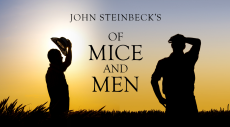
Deborah Patrick
Character analysis; Candy (Of Mice and Men) by John Steinbeck.
John Steinbeck’s “Of Mice and Men” is a short but powerful book which portrays a rich theme and message to its readers. Steinbeck portrays Candy as a weak, old and disabled man who will soon outlive his usefulness on the ranch. Candy joins Lennie and George’s dream to “live off the fatta of the lan” a microcosm of the American dream. This dream is so contagious that Candy for a minuscule moment allows himself to dream of the possibility. However, the world which migrant workers live is a harsh and predatory one which tramples on dreams coming to fruition thus Candy’s dream to “live off the fatta lan” is vanquished as Curley’s wife dies killing the dream with her. On surface level, Candy is just an old swamper however an in-depth analysis of Candy’s character reveal that there is more to him that meets the eye. The character of Candy is a complex one and an extended metaphor which hints at the society and life of the migrant workers. Life is a struggle; only the strong would survive and all others would be weakened by disability and age. Candy’s dog an ancient, half blind sheep dog brittle with age also represents the downtrodden and the weak. Candy’s dog is shot by Carlson and his plea on keeping the dog fell on deaf ears, “maybe tomorra let’s wait till tomorra”. In a world of Candy, past achievement and emotional ties are of no significance and thus can be readily done with. The killing of candy’s dog also represents the societal strata and hierarchy as there is no room for the weak and vulnerable.
Furthermore, Steinbeck also uses Candy to illustrate a grim but true picture of the world, nature against man, the predator-prey cycle and man’s struggle to overcome strife and poverty. However despite Candy’s attempt, his efforts prove futile. He joins Lennie and Candy’s dream as he fears just like his dog, his time will come when he will be of no use to anyone, “they will come for me soon, jus as soon as I can’t swamp no more”. This statement reflects his fear at being cast as an outsider and thus he holds on precariously to George and Lennie’s dream. However nature and fate assert their power over Candy’s as the death of Curley’s wife inhibits his dream.
In conclusion, Steinbeck ends the book in a cyclical structure. Candy’s dream is dead and the sixth section of the book depicts that even in the perfect, idyllic scene, danger and evil lurk in the shadows. The heron eating the water snake, the rabbits scuttling away as footstep approach create an ironic twist. Candy could never achieve his dream and just as Crooks says their dream is a mere fantasy which cannot come to reality, an oblivion and a state of utopia which they imagine to escape the harsh realities of migrant life which plague them and leave a harrowing reminder of the brutal nature of life. In making Candy’s dream die, perhaps Steinbeck tries to demonstrate life as a survival of the fittest where only the strong survive. To be free from pain or sadness, to glimpse even the slightest ray of happiness is only in death just like Curley’s wife and Lennie.
This picture was gotten from
https://www.google.co.uk/search?hl=en&site=imghp&tbm=isch&source=hp&biw=1360&bih=618&q=of+mice+and+men&oq=of+mice+and+men&gs_l=img.3..0l10.1966.5356.0.5762.15.5.0.10.10.0.78.295.5.5.0....0...1ac.1.64.img..0.15.424.k1IMcMozgWM#imgrc=rCyxrzMIgP-vdM%3A

0 Comment:
Be the first one to comment on this article.